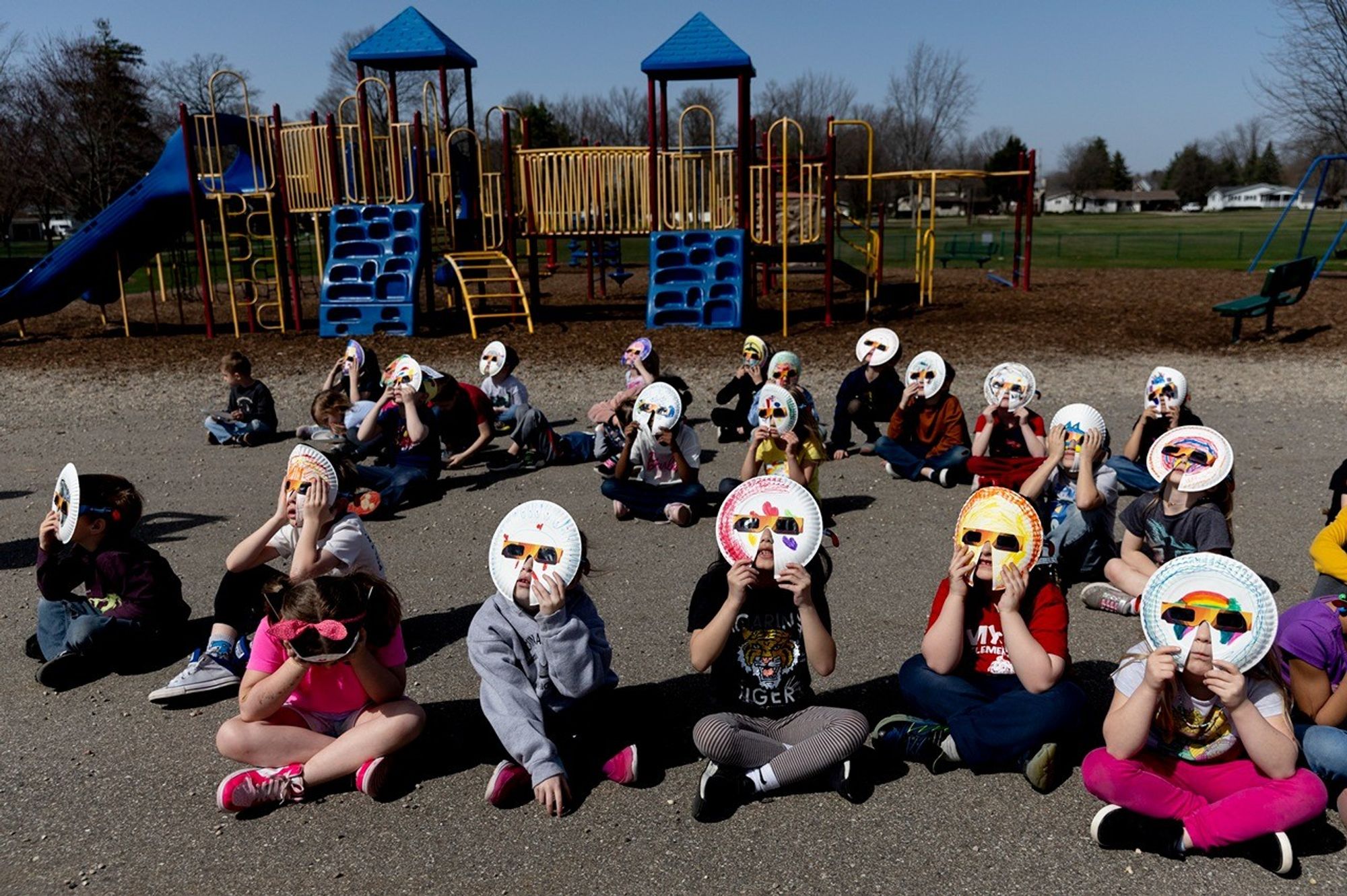The Great Solar Eclipse of 2024: A Celestial Spectacle Across North America
On April 8, 2024, a remarkable astronomical event unfolded as a solar eclipse swept across North America, captivating tens of millions of spectators from Mexico through the United States and into Canada. This extraordinary celestial phenomenon drew the attention of astronomers, educators, and various organizations, all of whom had been diligently preparing the public for this grand spectacle. Drawing on the successful engagement efforts from the eclipse of 2017, the NASA Heliophysics Education Activation Team (NASA HEAT) took the lead in promoting an engaging and educational activity, aptly named “Eclipse Essentials: Safe and Stylish Solar Viewing Glasses.”
The initiative aimed to enhance public understanding and appreciation of solar eclipses while ensuring safe viewing practices. The activity was initially tested in Albuquerque, New Mexico, during the Balloon Fiesta in October 2023, coinciding with an annular eclipse. The event provided a perfect opportunity for NASA HEAT to engage with the public, offering a hands-on experience that combined science with creativity.
Creating a Safe and Stylish Solar Viewing Experience
During the Albuquerque event, the NASA HEAT team introduced an innovative approach to solar viewing, utilizing solar viewing glasses, paper plates, and various drawing and decoration supplies. The activity was designed to be inclusive and accessible, appealing to both minors and adults. Visitors of all ages gathered around the heliophysics tables set up in the NASA tent, eager to participate in this unique and educational experience.
The positive reception of the activity at the Balloon Fiesta inspired NASA HEAT to further refine the design of their “face shield” concept. The goal was to make solar viewing not only safe but also enjoyable and stylish. By incorporating elements of creativity and personalization, the team aimed to elevate the traditional eclipse-viewing experience.
Training Educators and Outreach Personnel for Maximum Impact
In the weeks leading up to the April 2024 solar eclipse, NASA HEAT organized training sessions for educators and outreach personnel across the continent. The objective was to equip them with the knowledge and resources needed to replicate the success of the Albuquerque event on a larger scale. These training sessions emphasized the importance of safe solar viewing practices and provided practical guidance on how to implement the “Eclipse Essentials” activity in various settings.
Educators were encouraged to adapt the activity to suit their specific audiences, making it relevant and engaging for diverse groups. By empowering educators and outreach personnel with the tools and confidence to lead eclipse-viewing activities, NASA HEAT aimed to maximize public engagement and foster a deeper appreciation for heliophysics.
Understanding Solar Eclipses: A Brief Overview
A solar eclipse occurs when the moon passes between the Earth and the sun, temporarily obscuring the sun’s light. There are three main types of solar eclipses: total, partial, and annular. During a total solar eclipse, the moon completely covers the sun, casting a shadow on parts of the Earth and plunging them into temporary darkness. This is the most dramatic and awe-inspiring type of eclipse, as witnessed by millions during the April 2024 event.
In contrast, a partial solar eclipse occurs when only a portion of the sun is obscured by the moon, while an annular eclipse happens when the moon is too far from the Earth to completely cover the sun, resulting in a “ring of fire” effect. Each type of eclipse offers a unique viewing experience and provides valuable opportunities for scientific observation and public engagement.
The Importance of Safe Solar Viewing Practices
One of the key messages promoted by NASA HEAT and other organizations during the eclipse was the importance of safe solar viewing practices. Looking directly at the sun without proper protection can cause serious eye damage, including permanent vision loss. To prevent such risks, solar viewing glasses equipped with special filters are essential for safely observing the sun during an eclipse.
The “Eclipse Essentials” activity not only provided these glasses but also encouraged participants to personalize their viewing experience. By decorating their solar viewing glasses and creating face shields, individuals could express their creativity while ensuring their safety. This approach helped demystify the science behind solar eclipses and made the experience more relatable and enjoyable for the public.
Public Reaction and Community Engagement
The April 2024 solar eclipse garnered widespread attention and enthusiasm from the public. Communities across North America organized viewing events and educational activities, bringing people together to share in the wonder of this celestial phenomenon. Social media platforms buzzed with excitement as individuals shared their eclipse experiences and creative solar viewing gear.
The collaboration between NASA HEAT, educators, and local organizations played a critical role in fostering community engagement and ensuring the eclipse was a memorable and educational experience for all. By leveraging the power of partnerships and grassroots initiatives, the impact of the eclipse extended beyond the event itself, inspiring future generations of astronomers and scientists.
Conclusion: A Lasting Impact on Public Science Education
The Great Solar Eclipse of 2024 was more than just a visual spectacle; it was an opportunity to promote science education and public engagement with astronomy. Through initiatives like the “Eclipse Essentials” activity, NASA HEAT and its partners successfully connected people with the wonders of the universe, emphasizing the importance of safe and informed viewing practices.
As we look to the future, the lessons learned from the 2024 eclipse will continue to inform public science education and outreach efforts. By making complex scientific concepts accessible and engaging, we can inspire curiosity and foster a lifelong love of learning. For more information on solar eclipses and safe viewing practices, visit the official NASA website.
For more Information, Refer to this article.

















![Samsung Unveils AI-Driven Home Appliance Innovations at CES 2025 [CES 2025] A New Era of Personalized Appliances: Samsung Showcases Home AI Innovations](https://www.hawkdive.com/media/samsung-digital-appliances-home-ai-showcasing-home-ai-innovations_thumb728-218x150.jpg)















